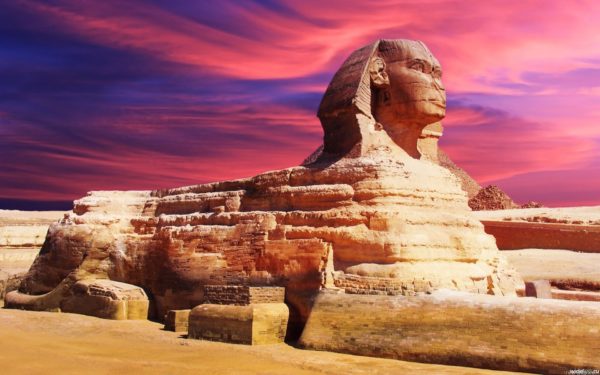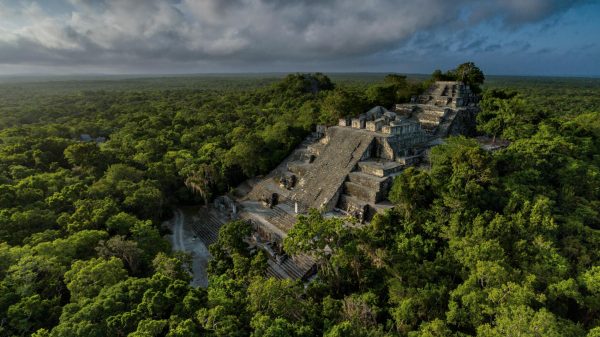I’m going to keep this short because we have to go to dinner in a sec here with the big wigs from Rune’s company. Deer Valley is beautiful. The skies are blue, and the temperatures are in the 70s but will get down into the 40s tonight. I can’t believe we have a fireplace in our room! What luxury, and I’m sure going to use it. I’m glad his company is paying for all this, is all I can say!
Don’t forget about Erik’s Hour of Enlightenment radio show tomorrow at 5:00 PM PT/7:00 PM CT/8:00 PM ET. No more than 15 minutes before the top of the hour, call 619-639-4606 to ask Erik your question. There are three ways to listen: Listen on the phone line, click on the “Listen” icon on the right sidebar of the blog or click on this link: http://goo.gl/aFHTzJ
One little housekeeping note, if everyone can please refrain from emailing or private messaging me until I get back, I’d be grateful. Usually I spend 3-4 hours a day answering these, and I don’t want to cut into precious vacation time, even if it’s a free one! Thanks for understanding!
Enjoy Part Two of Mr. Sphinx!
Me: Yeah. Well, tell me about the Golden Age 12,500 years ago in Egypt. That’s prehistory. So, tell me about that civilization. They say that aliens walked among the people then, including Osiris, but I want details from you, Erik!
Erik: They used the earth’s gold for a lot of stuff like for medicine and stuff.
Robert: Gold? Really?
Me: I have heard that the aliens needed our gold for some reason, and in exchange, they helped the humans, but—
I take a sip of my drink.
Me: I’m taking a sip of my Jack and Coke. You like it?
Robert laughs because the glass is big and full.
Me: No, no. It’s Chaga tea!
Robert (lifting his glass of pink liquid): I have electrolytes.
To each his own.
Me: Yeah, so go on.
Erik: Gold was used not just for ornamental purposes but also in medicine.
Me: I think the aliens had to use it also to help their planet. Something about—and I may be wrong—that they had to have gold to help their planet survive environmentally or something.
Erik: Gold is a type of conductor.
Me: Okay.
Erik: So it was used for that.
Me: What specifically?
Robert: Are these really aliens we’re talking about or is this just other human beings who were maybe different from Egyptians?
Erik: No, they were really aliens.
Robert chuckles.
Me: I believe it!
Robert: Okay. Well, I don’t know. I’m just going to listen to what Erik says.
Erik: They had big heads.
Hence the structural problems with the Sphinx.
Me: So, they came here to look for gold for whatever reasons, maybe to help their own planet, too?
Erik: It was more like what we’d call a semiconductor. They had other technology that, when you add gold to it, in some way it has properties that humans don’t yet know how to tap into.
Me: Ah! All right, well tell me more about the Golden Age.
Erik: It was very similar to how it is now, not in a technologic sense but in the fact that humans were awakening to a lot of things.
(Long pause)
Robert: He’s just showing me a lot of things that are happening, culturally.
Oh to get into Robert’s brain right now.
(Long pause)
Robert (chuckling): I’m sorry. He’s showing me a whole lot of stuff!
Me: Use your words, Erik!
Robert: I know!
Erik: Like psychology. They were doing psychology then.
Me: Wow.
Erik: And the gold that you’d use in people’s teeth like for fillings—
Then Erik sports all gold teeth.
Erik: Check out my grill!
Robert busts out laughing.
Erik: They would even inject gold under the skin.
Robert: Really?
Me: Wow. Ew. So gold was a big deal.
Robert: This is crazy. He was saying they used it for infections and sometimes for pain.
Erik: They’d use tattoos that sometimes had gold in it and sometimes didn’t. It sometimes had a plant material in it. So it was a Golden Age for holistic medicine. It was all natural because they didn’t have any way to create artificial stuff the way we do now.
Me: Yeah.
Erik: And back then, we were on the cusp, from the civilization perspective, of unification. There was a lot of trade going on with other areas. Everyone was starting to mix and mingle. But it all fell apart because human beings at that time were not ready for it. A lot of times what we’ll do is plant the seeds for something that will happen later when human beings, on a global level, are more ready for it. At that time, it was more of a localized thing. There was no unification of the whole globe because we didn’t have the technology to be able to do that yet.
Hurray for Al Gore’s Internet.
Erik: So back then, we created this small seed in human being’s DNA, and then when the technology and everything else and human beings have gotten to a certain point like a critical mass, all that starts to come out in a way that is long lasting. It feels like that’s what’s getting ready to happen again. Some people think the world is getting ready to crash in on itself. Now, weather-wise and how the environment is changing, that’s true, but it’s because human beings are ready to handle it. If this [change in weather and environment] had happened on a global scale 12,000 years ago, humans would have gone extinct.
Me: So what was the biggest advance at that time?
Erik: Spiritual awakening. Planting the seeds for the expanded awareness that was to come in the future.
(Pause)
Me: Can you give us more details? A lot of people don’t know what expanded awareness signifies.
Erik: It’s about knowing that there’s more than what you see in front of you.
Me: Ah, okay.
Erik: There are things that we might call magic or things that we can’t measure, but they’re real. The only reason we can’t describe or quantify them is because we’re not there yet. It doesn’t mean that it’s not real. You know this, Mom, because you’ve said it many times. People go around and talk about things they get intuitively but they have no way of proving them. Then later on, they end up getting proven.
Me: Yeah. All right, now a lot of people want to know what’s under the paw of the Great Sphinx. They tried to dig, but then something happened, and they were afraid for the structural integrity of the monument so…
Robert: He’s showing me this cube shaped box that opens up into a square room, but it’s not really big and there are trinkets in it. The first thing I heard was an amulet. I just associate that with there’s a bunch of trinkets.
Me: Some people say that the Atlanteans, when they were about to go under, needed to preserve their prehistory, a recording called the Book of Records, and that is one of the places this book is housed. Is that true?
Erik: In a sense it’s true, but it’s not associated with the Atlanteans. Not directly anyway.
Me: Edgar Cayce. This information is from Edgar Cayce. Go ahead.
Robert: Yeah.
Erik: It’s more of a metaphor for ancient history so sure, a lot of the stuff that’s in there is from older civilizations that pharaohs have collected from their travels, and then they had trading between groups—everything that they considered valuable, they stored it in that room. It was meant to be a time capsule.
Me: Okay, that makes sense. So it is a Book of Records in a way, but not like a bunch of Sumerian writings or whatever.
Erik: It’s not like the Da Vinci Code or the Ark of the Covenant or something like that.
Robert chuckles.
Erik: It’s not some magical thing. It’s really more of a time capsule with things people revered at the time.
Me: Well, did the Atlanteans have anything to do with the Book of Records?
Erik: They did, loosely. They weren’t right there when they were building the Sphinx, and they influenced it and told them what stuff to put in the room. Nah, but they did come into contact with them over history, and then they acquired things that that group had and then things from other groups that people aren’t even aware existed.
Me: Okay.
Erik: So, there were things that were considered rare and precious, not necessarily because it was made of gold or some rare material but because of the—
Me: History behind it.
Erik: Yeah. There is a book in there, though.
Robert: The book he’s showing me is made of—and I’ve heard this word before—papyrus.
Me: Oh, yeah. Mm hm.
Robert: But it looks like it has really thick pages and, I don’t know. You probably can’t tell on the screen, but it’s about that big.
He puts his hands about 2 feet apart and then shows a height of about 2 feet.
Me: Okay. What information does it have?
Erik: Part of it is a written history of different people who were in power. Some of it’s scientific based on what people have observed.
Robert: There are early languages in it too. He’s showing me that. Some were languages that only existed for a little while.
Me: Okay. Interesting.
Robert: You mentioned the Atlanteans. He’s bringing up that one of the other groups that came into the picture, but I wouldn’t think they’d be around there that long ago, were Asians. The Asian culture. Like the Chinese.
Me: Oh! Okay.
Erik: They were considered very exotic to the people in the region.
Robert: They came there. How they got there, I don’t know, but they were there!
Me: Interesting.
Robert: Yeah, because I see this visual of a guy in robes with a hat that’s kind of like—I don’t know what the word is. It’s kind of like this.
He draws a picture and shows me.
Robert: Can you see that?
Me: Oh yeah. Uh huh. It looks like the one from Curious George’s master, the man in the yellow hat.
Robert: It’s rounded at the top. It’s not like a dunce cap!
Robert chuckles.

Stay tuned for Part Three on Friday!



